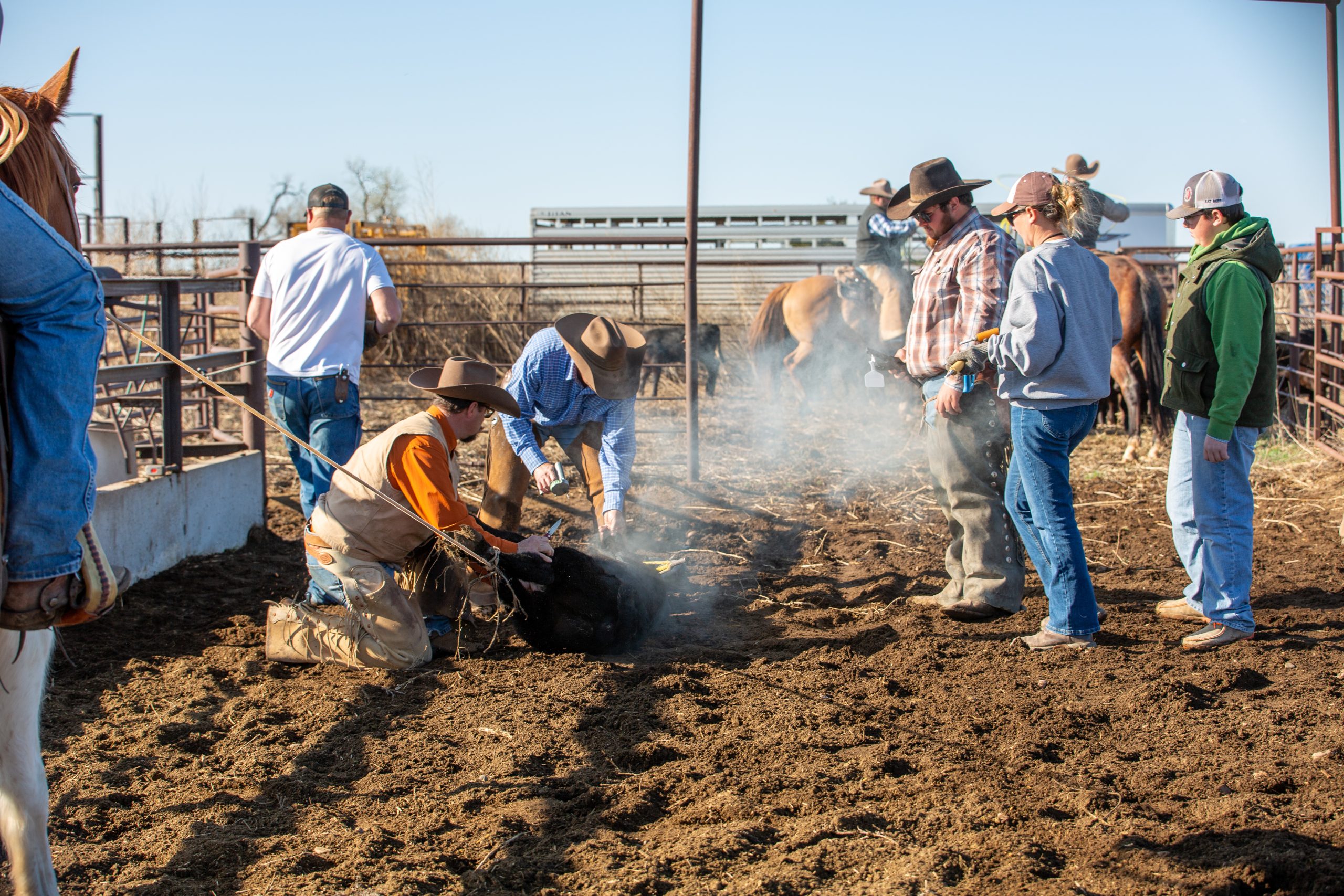Calves get their best foot forward at branding time

Late spring and early summer is branding time in the High Plains region, and even if some cow-calf producers don’t brand calves any more, many still work them at this time to set them up for success later on.
A.J. Tarpoff, Kansas State University associate professor and beef Extension veterinarian said working calves at branding time is most commonly done in those spring calving herds prior to turning them out on grass. Often around 2 to 4 months of age.
“This also coincides with a critical time in the calf’s immune system development, when its own immune system starts to take over as maternal antibody protection from colostrum is dropping,” he said. “Working calves at this age as provides an opportunity to prime the calf’s immune system with vaccination towards certain common pathogens they will need protection against later in life.”
At this time in a calf’s life it’s most commonly recommended they receive a multivalent clostridial vaccine (often referred to as a blackleg vaccine), as well as a vaccine against the pathogen antigens such as IBR, BRSV, PI3, and BVD.
Tarpoff said in research material from December 2017 veterinarians surveyed recommended using a modified live viral vaccine while 12% recommended using killed vaccines at that age.
“It is important to visit with your local veterinarian to discuss product choices,” he said. “Some vaccines and vaccine types have published studies to support their use down to a month of age or earlier.”
When it comes to branding calves, it’s important to remember brands have always been a way to identify cattle.
“In today’s age, we use newer identification methods such as RFID tags, however in some states it may still be legally required to brand cattle,” Tarpoff said.
A brand needs to be properly applied to ensure it can be read for the life of the animal. Tarpoff suggested to ensure the best outcome when branding: 1. Proper restraint. Either in a chute or on the ground, animals need to be restrained appropriately. 2. Brand temperature/cleanliness. Branding irons cool during use. Ensure proper heated temperature as well as a clean surface. Keep a metal brush available to keep dirt or grime from building up on the hot iron. Avoid branding wet cattle.
He did note that brands are different than a logo, because it is considered an official way to identify livestock. Any brand applied to an animal must be registered by the state.
“Every state has their own unique brand laws,” he said. “It is important to contact your state Animal Health Office/Livestock Board/Brand office or equivalent to ensure proper compliance.”
Another common task completed at branding time is castration of the bull calves.
“Castration is recommended to be conducted at the earliest opportunity in an animal’s life,” Tarpoff said. “If it has not already been conducted, this is an opportune time.”
Knife cut castrating is the most common method recommended by veterinarians, followed by banding. When banding bull calves, most vets will recommend vaccinating for tetanus as well.
“If knife castration is being conducted it is important to keep the process and the environment as clean as possible to promote wound healing,” he said. “If the area is extremely dusty (or muddy) it increases the likelihood of post castration infections. Sprinkling branding pens with water if its dusty or promoting drainage if it’s wet can all be an important step in the castration portion of branding.”
Keeping castration tools clean is an important step too.
“A bucket with disinfectant (chlorhexidine) and a brush can be a simple way to promote cleanliness between animals,” he said.
Kylene Scott can be reached at 620-227-1804 or [email protected].
PHOTO: Calves can get their best foot forward at branding time. (Journal photo by Kylene Scott.)



